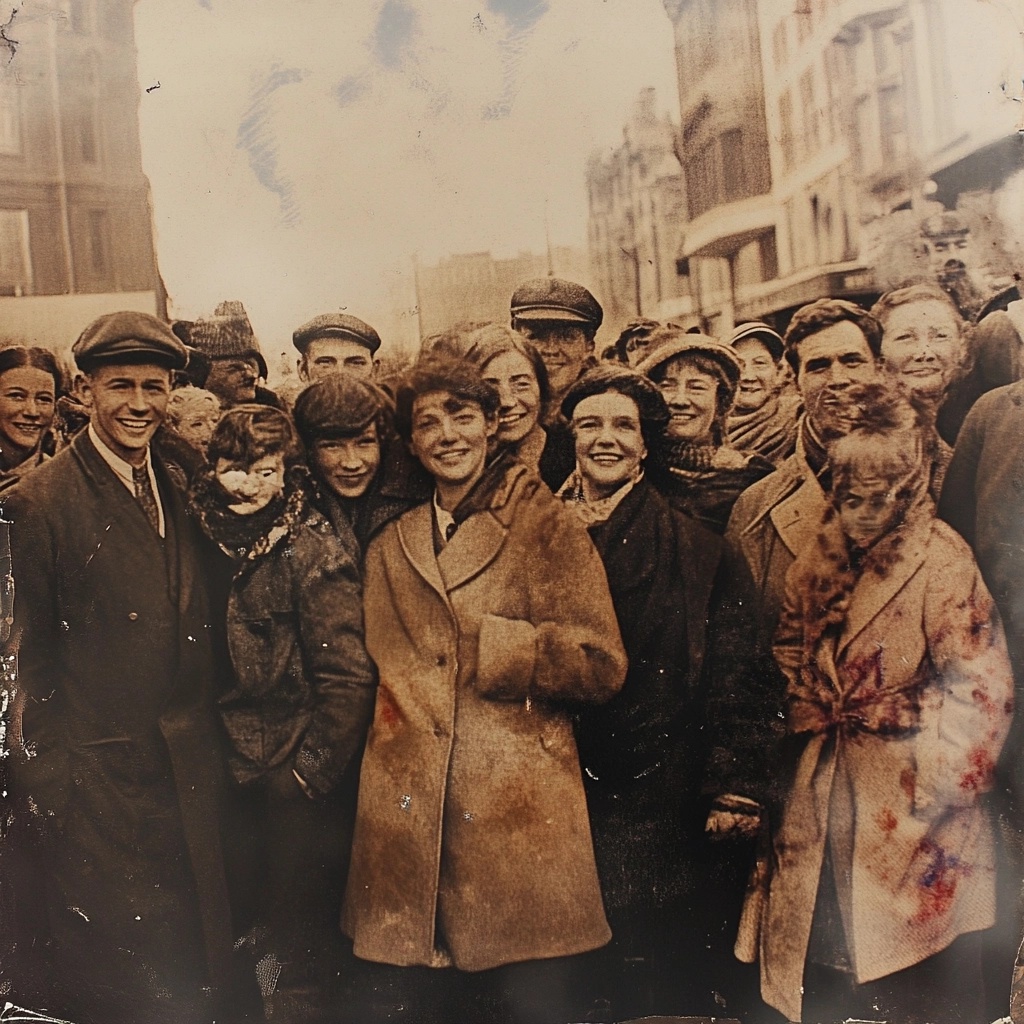THE GOAT (2)
By:
January 8, 2025

“The Goat: Cardiff, A.D. 1935” was first published in Naomi Mitchison’s 1929 collection Barbarian Stories. Compare with “The Lottery” (The New Yorker, 1948), for which Shirley Jackson would become famous. HiLoBooks is pleased to serialize the story for HILOBROW’s readers.
ALL INSTALLMENTS: 1 | 2 | 3 | 4 | 5 | 6 | 7 | 8.
I rather wish he’d been in the Government that passed this Act, all the same, though perhaps it’s a game honest men are well out of, and those who easily get excited most of all. Probably no one but that particular brand of Liberal would have done it, even in the thrill of thinking they were quite a new Party. Labour, as it is now — or rather as it has been since the split-up — wouldn’t have dreamt of it. I suppose there was a time when they were a real party of the Young — one seems to remember it — compact and violent enough to do this. But they’ve been large and old and respectable and remarkably good at not hearing third cock-crows for a long time now. It was a good Act and hasn’t been repealed yet, though lots of people try not to talk about it. The thing happens in turn at various of our larger and nastier industrial towns, Liverpool, Manchester, Glasgow, Hull, Coventry and so on. This year it was Cardiff again for South Wales. As everybody knows, all the owners have to meet, and one is chosen by lot to be legally and ritually killed, in different ways at the different places, for the good of all. The Lot business was part of that curious democratic revival there was: going right back to the real thing. I rather believed in it myself: one gets pretty sick of the representation idea; but Tom thought it was silly, and of course it has not survived as a political procedure anywhere else. But the whole thing seems sound, though of course the actual property and cash line, above which one becomes an owner, is rather arbitrary. It came, I expect, of the growing conviction in everyone’s minds that the rich had really too good a time of it, too much protection, a too slow death-rate. And there had been the terrible after-strike years in all the big industries, and those in power felt, I think, that this was the only kind of thing short of what they really wanted — and weren’t going to be given — that would at all satisfy the hunger in the minds of the Have-nots.
The last Cardiff Assizes happened just before the day, and Tom, as usual, got desperately indignant. There were, as always, terrifically harsh sentences on small crimes against property and any crimes against established sexual morality: miserable people sentenced to seven years for incest that is inevitable in the over-crowding of towns, or bestiality that is almost as inevitable in the boredom of a lonely farm: things bad for the individual most likely, but that wasn’t what they were sentenced on — that wasn’t what the judges grew so fierce about! These things are still kept out of the papers; personally I’ve never heard them discussed, never heard any anger or protest about them, except by members of the Bar: reasonably young ones — they get used to it later, as one always does get used to things. They don’t really distress me so much as they do Tom. But it was in that mood that he stayed on at Cardiff after the Assizes, and wired for me to come too.
RADIUM AGE PROTO-SF: “Radium Age” is Josh Glenn’s name for the nascent sf genre’s c. 1900–1935 era, a period which saw the discovery of radioactivity, i.e., the revelation that matter itself is constantly in movement — a fitting metaphor for the first decades of the 20th century, during which old scientific, religious, political, and social certainties were shattered. More info here.
FICTION & POETRY PUBLISHED HERE AT HILOBROW: Original novels, song-cycles, operas, stories, poems, and comics; plus rediscovered Radium Age proto-sf novels, stories, and poems; and more. Click here.
